Panasonic TX-L55DT50 Review
Panasonic TX-L55DT50
Panasonic’s latest attempt to tackle the big-screen LCD market fails to impress.
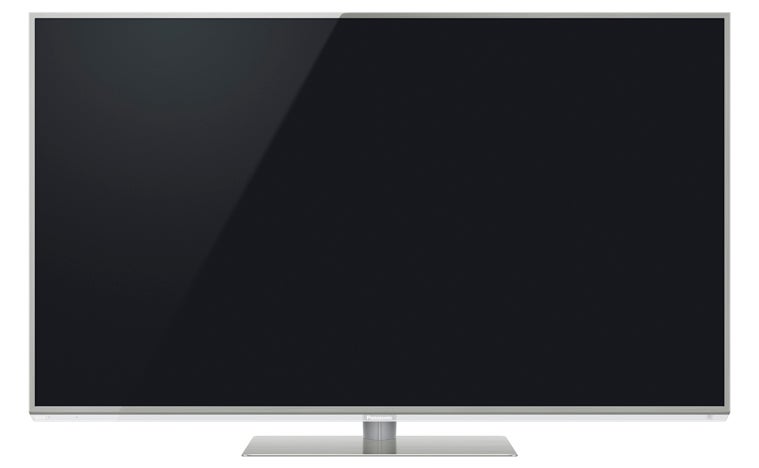
Verdict
Pros
- Gorgeous design
- Exceptional 3D pictures
- Good online system
Cons
- Poor black level performance
- It's expensive
- Needs more backlight controls
Key Specifications
- Review Price: £2069.00
- 55in LCD TV with edge LED lighting
- Active 3D playback
- Viera Connect online features
- Freeview HD & Freesat HD
- DLNA and USB multimedia playback
Not so long ago we reviewed and were slightly disappointed by Panasonic’s first 55in LCD TV, the flagship L55WT50. It really struggled to deliver a natural black level performance.
It’s with some trepidation, then, that we approach the step-down 55in LCD TV, the Panasonic L55DT50. Especially as unlike its more expensive sibling, this one doesn’t employ a local dimming system with its edge LED lighting array.
Before we get too hung up on this, though, it must be said that at least some of the issues we had with the L55WT50 were caused by the clumsy machinations of its local dimming system. So maybe the L55WT50’s lack of local dimming might turn out to be a good thing.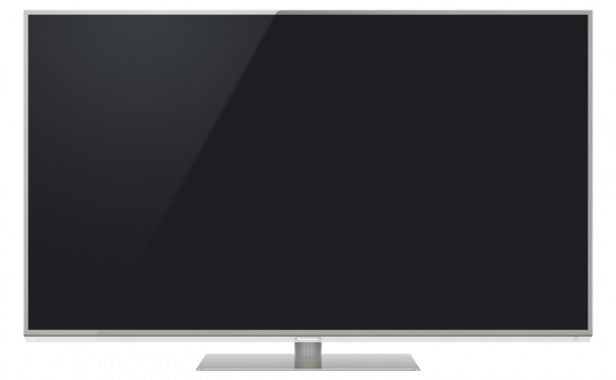
The Panasonic L55DT50 gets off to a strong start courtesy of its design. The tiny silver bezel that wraps around all four sides joins forces to hugely attractive effect with the couple of cm of glass protruding from the bottom edge and a supremely robust but also elegant stand. In fact, we might just prefer the DT50 design to that of the WT50.
Connections are comprehensive. Four v1.4 HDMIs support the TV’s video capabilities (including 3D), for instance, plus there are both Freesat HD and Freeview HD tuners. The modern era’s multimedia needs, meanwhile, are met by three USB ports, a LAN and built-in Wi-Fi. The latter two connections access either stuff stored on networked DLNA PCs, or Panasonic’s Viera Connect online platform.
Onwards and upwards for Viera Connect
Viera Connect has enjoyed a significant boost over recent months, giving us current highlights of AceTrax, Netflix, the BBC iPlayer, Skype, YouTube, the new BBC Sport portal, BBC News and Eurosport, as well as a wider selection of gaming and information apps. It’s worth stressing, too, that not all the games are of the basic ‘single screen’ variety found with most Smart TV platforms. Let’s Golf 2 and Asphalt 5 both deliver near-console experiences.
Viera Connect also has the most complete and well-organised marketplace for buying extra apps and accessories of any online TV system – though we still maintain that the brand should perhaps rethink its main app interface, which is starting to feel increasingly cumbersome as content levels increase.
While experimenting with the L55DT50’s multimedia streaming and online tools we noticed that the set doesn’t support the same handy multi-tasking features enjoyed on the WT50 models – a result of the DT50 series not enjoying dual-core processing. 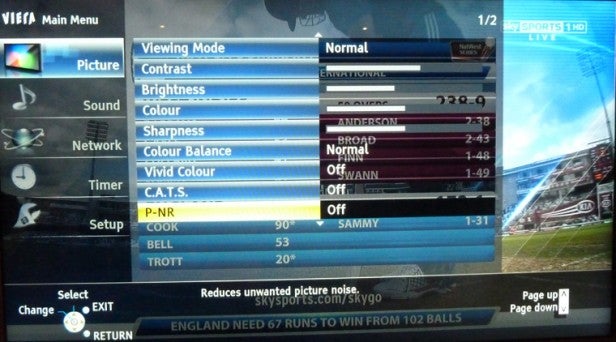
The Panasonic L55DT50 doesn’t join the upper reaches of Panasonic’s plasma TV range in enjoying the endorsement of the THX group, but it is supported by the Imaging Science Foundation (ISF). Which means there’s a degree of colour/white balance management and gamma control at your disposal, as well as two (day and night) ISF preset memories. Sadly, though, no matter how much time you or a paid-for ISF engineer put into toying around with the L55DT50’s picture settings, you won’t be able to get it to produce truly satisfying pictures.
There’s one simple but substantial reason for this: the set’s inability to produce a convincing black level response.
You are vaguely aware of this problem even when watching mostly bright images, as any dark bits tend to look grey rather than deep black. But the problem becomes excruciatingly obvious during predominantly dark sequences, leaving such scenes looking washed out, short of shadow detail, and generally unconvincing.
Not being able to produce a true black also inevitably causes problems for other colour tones during dark scenes, leaving them looking a little off key.
Contributing still further to the Panasonic L55DT50‘s dark scene problems are some fairly noticeable patches of extra brightness in the image’s corners as the illumination system struggles to keep base light levels consistent across the 55in screen.
Reducing brightness doesn’t really help
You might think that reducing the image’s brightness setting would instantly improve many of the issues mentioned above. But actually it just makes dark scenes look a deeper shade of grey while simultaneously taking even more shadow detail out of the image. This sort of response to brightness reductions is a sure indication of a screen that doesn’t have a very good core black level response. 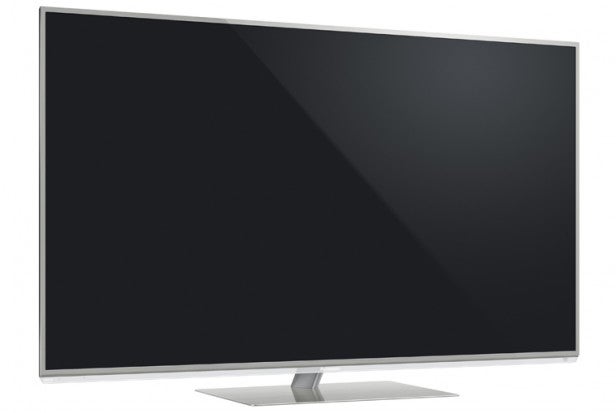
It doesn’t help here that, unlike most of its rivals, Panasonic doesn’t offer any form of manual backlight adjustment to accompany the set’s brightness control.
And there’s still more. For during our tests we were quite surprised by just how primitive the set’s dymamic backlight system seemed to be. This is designed to automatically adjust the screen’s illumination levels in response to an ongoing analysis of the image’s content, in a bid to boost black level response. So when the TV detects a shot is predominantly dark, the LEDs will have their output reduced to boost black colours before they’re stoked up again when bright content comes on.
Dynamic backlight system needs work
Such systems are routine in the LCD TV world now, but we were struck during our tests of the Panasonic L55DT50 by a) how distractingly obvious its backlight ‘shifts’ were when watching predominantly dark scenes, and b) how unsophisticated the system seemed to be at determining when to make its backlight adjustments.
A classic example of the dynamic backlight issues that trouble the L55DT50 can be seen in the final Harry Potter film on Blu-ray. At 5min 42secs in, a shot through some stairs downstairs into a light kitchen pans slowly up onto a much darker shot on an upper landing. During this camera move the L55DT50 first looks extremely grey where it should look black, before suddenly and very distractingly shifting its brightness down a number of gears at once as the last chink of light from the downstairs part of the shot finally disappears off the bottom of the screen.
Basically, the L55DT50’s handling of this admittedly tough-to-show shot is a mess – and trust us when we say you don’t have to be an experienced TV reviewer to see the problems. 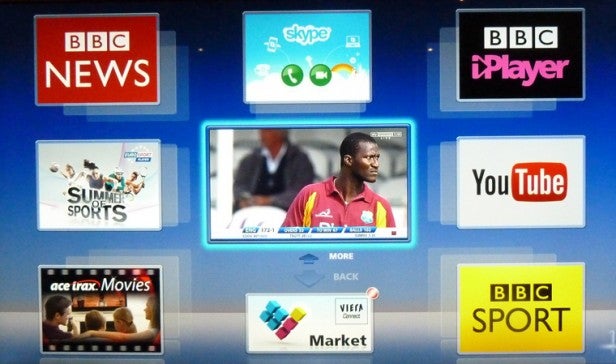
With this in mind it’s a real shame that Panasonic hasn’t followed the lead of many of its rivals and provided you with some flexibility over how aggressively the dynamic backlight system works. In fact, so far as we could see you can’t even manually elect to turn the system on or off. The only time we noticed that it was inactive was when we selected the True Cinema preset. Unfortunately, though, while this mode meant dark scenes avoided the backlight instability noticeable with other presets, it also failed to deliver anything like the black level depth we would hope to see from a 2012 LED TV.
Much better in ambient light
One oddity about all these black level problems is that if you let a lot of light into your room, especially direct sunlight, the L55DT50’s black level response improves vastly. We would expect this to happen to some extent merely as a result of how the introduction of ambient light alters your perception of the light coming from the TV. But with the L55DT50 the effect seems unusually pronounced, almost as if some contrast filter in the screen actually needs ambient light around before it starts to work properly. Weird.
Even in these relatively bright ambient conditions, though, there’s a problem, as the glassy screen finish proves rather reflective of bright objects in your room.
The Panasonic L55DT50’s pervasive black level issues are made all the more unfortunate by the fact that in most other ways its pictures are very good – excellent, even. Sharpness levels, for instance, are exemplary, rendering HD material with just the sort of pixel level precision we love to see on screens as large as this one.
The sharpness looks totally natural, too, with no sense of grain or edge ‘ghosting’ to indicate that any sneaky false sharpness processing might be in play.
Bright scenes look excellent
Bright, colourful scenes look actually pretty awesome on the L55DT50, with punchy, dynamic colours that look more natural in tone than they do during dark scenes. There’s plenty of subtlety to colour blends once the TV isn’t having to try and render any really dark content, too.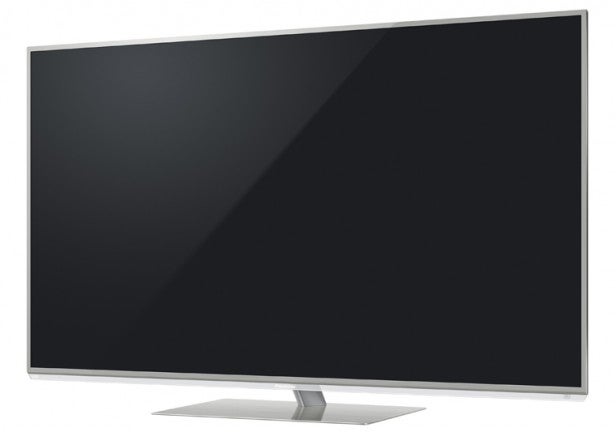
Motion, meanwhile, looks terrific on the L55DT50. There’s hardly any resolution loss over moving objects – especially with the set’s Intelligent Frame Creation set to its lowest setting – and judder is pretty much non-existent too. Even when watching 3D.
Actually, from being average with 2D the Panasonic L55DT50 suddenly becomes stellar with 3D. With the darkening effect of the active shutter glasses hiding some of the set’s black level problems, you’re free to revel in the brightness, colour-richness and stunning sharpness of the L55DT50’s 3D images. Especially as there’s not a trace of crosstalk ghosting noise to take the edge off, well, edges. 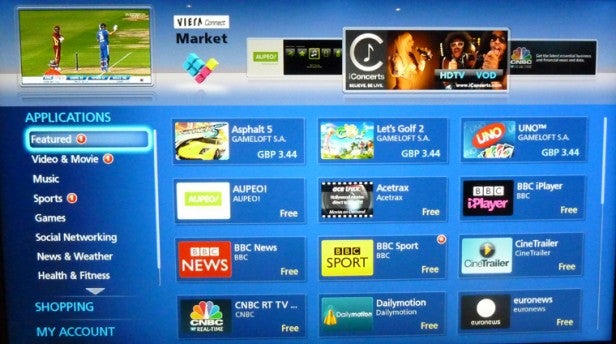
In fact, ironically the L55DT50 is in some if not many ways the single best 3D TV we’ve ever tested. Only residual traces of backlight bleed/clouding in its corners during 3D viewing stop it from scoring a perfect 10 for its 3D efforts.
The L55DT50’s upscaling of standard definition broadcasts impresses too, as does its very respectable input lag figure of around 37ms. This shouldn’t be high enough to significantly reduce your console gaming exploits.
Finally, the TV joins the WT50 series in offering a respectable rather than scintillating audio experience. The set’s mid-range is decently open and clean, but deep bass and high trebles both tend to go AWOL.
Verdict
The Panasonic L55DT50 is the second disappointing 55in LCD TV from Panasonic in a row, and is certainly no competition at all for the brand’s vastly superior big-screen plasma models. More worryingly, perhaps, the L55DT50 is also no match for the latest equivalent models from some rival LCD brands, especially Sony’s much superior 55HX853 – a set which also makes the L55DT50’s £2000 plus price tag look very expensive.
Based on our experience with the WT50 series it’s possible that smaller DT50 models might avoid some of the pitfalls experienced on this 55in model. We’ll try and get some in to find out. But so far as Panasonic’s really big screen edge LED efforts are concerned, at least, it seems the brand needs to go back to the drawing board for 2013.
How we test televisions
We test every TV we review thoroughly over an extended period of time. We use industry standard tests to compare features properly. We’ll always tell you what we find. We never, ever, accept money to review a product.
Trusted Score
Score in detail
-
Features 9
-
3D Quality 9
-
Value 5
-
Design 10
-
2D Quality 6
-
Sound Quality 7
Features
| Size (Inch) | 55in |
| Display Type | LED |
| Max. Resolution | 1920 x 1080 |
| Full HD 1080p | Yes |
| Digital Tuner | Yes |
| Freeview HD | Yes |
| Freesat HD | Yes |
| 3D Ready | Yes |
| Refresh Rate (Hertz) | 1600Hz |
Connectivity
| HDMI | 4 (v1.4) |
| Component | 1 |
| Composite | 1 |
| Scart | 1 (RGB) |
| Digital Audio Out | 1 (optical) |
| Headphone | 1 |
| Charging/Computer Connection | 3 |
| Ethernet | 1 |
| WiFi | Yes (built-in) |
Physical Specifications
| Height (Millimeter) | 726mm |
| Width (Millimeter) | 1237mm |
| Depth (Millimeter) | 27mm |
| Weight (Gram) | 17g |

